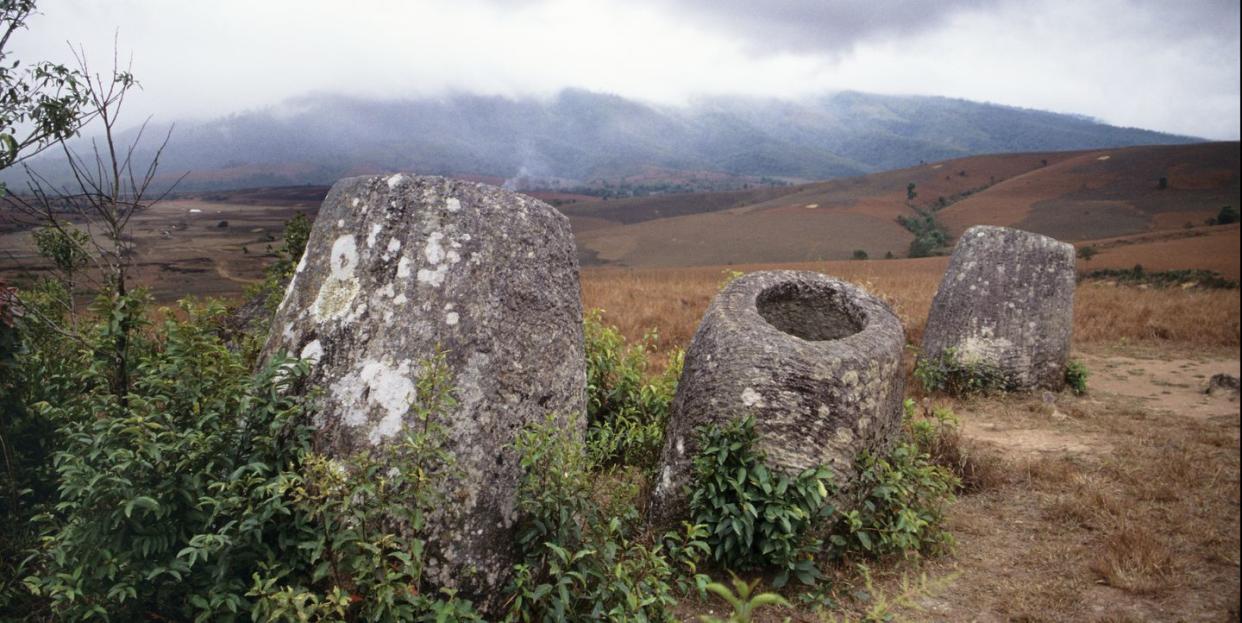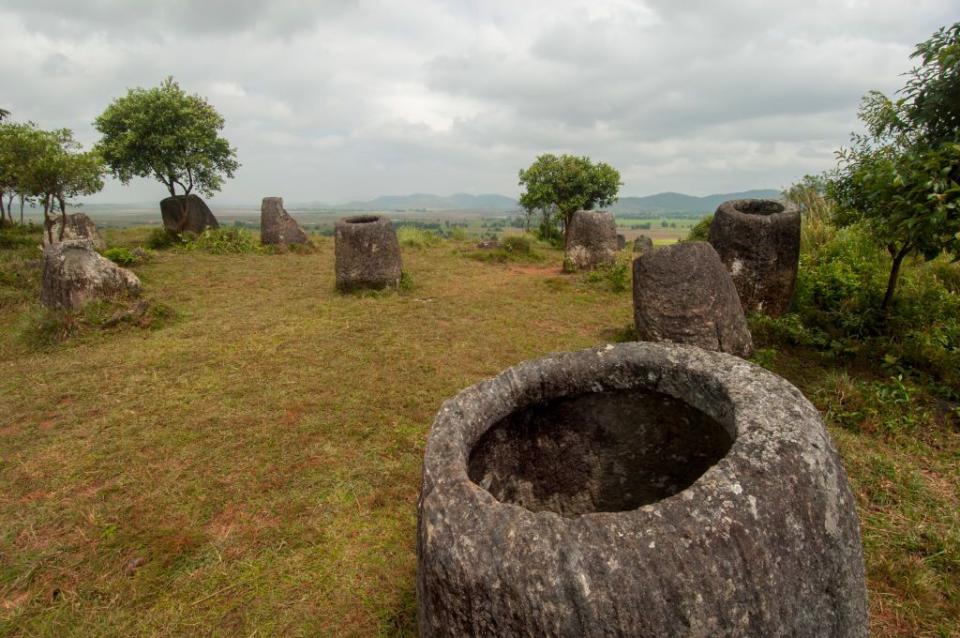These Creepy Stone Jars Used to Have Dead People Inside Them

At first glance, the stone structures in this picture look like massive flower pots or tunnels that lead to secret underground bunkers-both of which would be pretty neat. But it turns out the giant jars, which researchers recently discovered in Laos, served a much grimmer purpose: holding a bunch of dead bodies.
Unfortunately, that's just about all we know about them.
The 10-plus-ton jars, which sit on burial grounds, were hand-carved. But given the limited tools available 2,500 years ago-their approximate age-researchers can't figure out how the builders managed such feats of construction.
Some of the newly discovered jars sit on hillsides and in forests in remote areas of Laos. Another site in Laos' Xiangkhouang province, dubbed the Plain of Jars, features the same kinds of structures as well as skeletons belonging to a mysterious group of humans who likely used the jars in burial rituals.

So who built these "jars of the dead," as researchers affectionately call them? According to the Australian and Laotian archaeologists who found the latest batch, the group was likely spread out over thousands of square miles, because the jar sites are scattered and cover lots of land. The Plain of Jars is home to around 400 jars, while most of the other Laotian sites hold 60 or fewer.
The researchers' work, aside from being creepy as hell, is also surprisingly dangerous. They estimate that 80 million undetonated bombs sit under the sites in Laos, all dropped there during the Vietnam War.
In order to learn more about the mystery group who used the jars and probably filled them with corpses, the researchers will use the available data (including photos) to create a digital version of the landscapes and jars. Once the renderings are complete, they hope the global scientific community will have access to the virtual Laotian sites and contribute to the ongoing research.
Source: Live Science
('You Might Also Like',)

